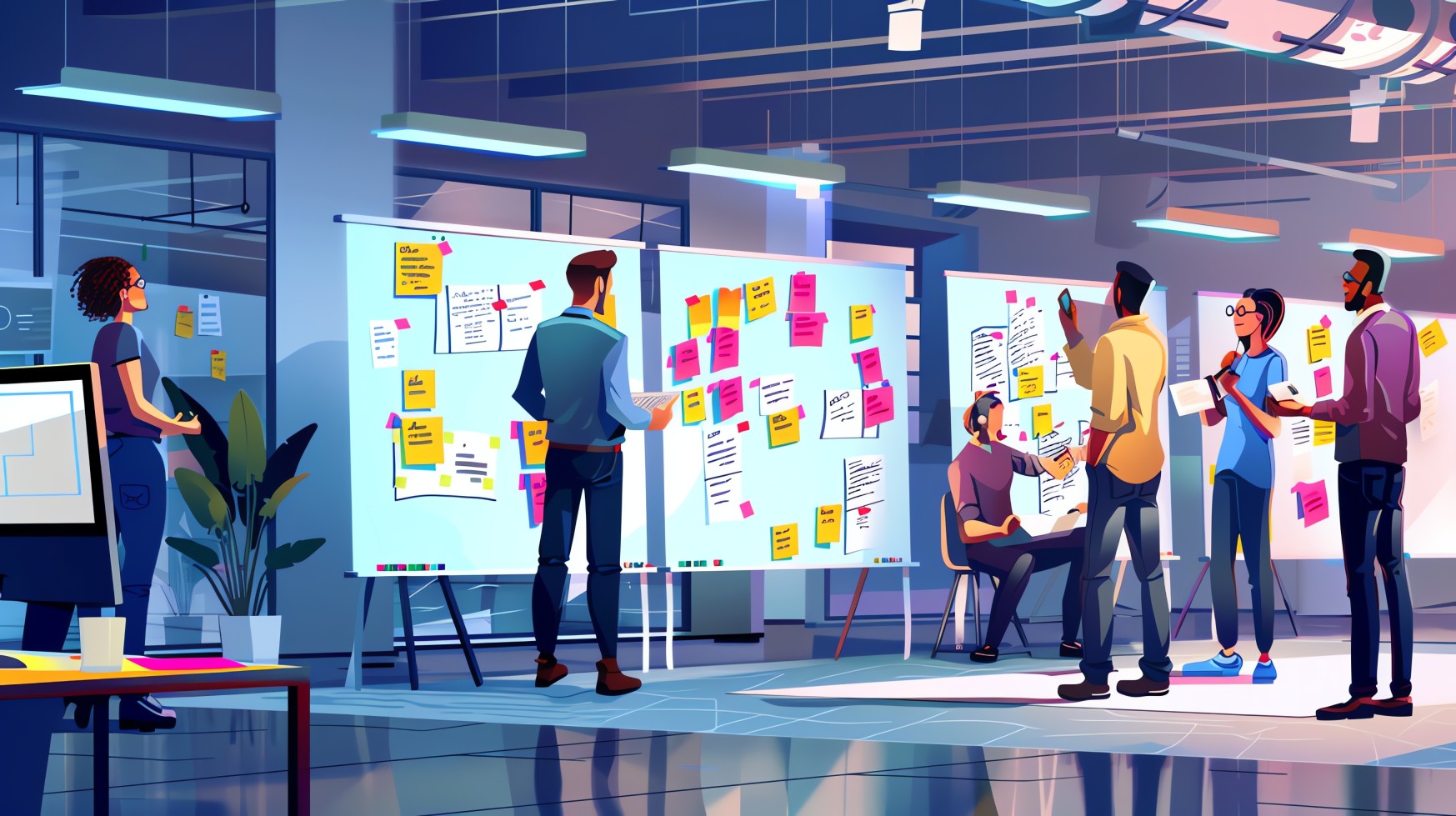Understanding Enterprise Agile: Transforming Organizations with Agility at Scale

As businesses face increasing demands for speed, responsiveness, and adaptability, enterprise agile emerges as a solution to implement agility at an organizational scale. Extending the Agile Manifesto's principles beyond software development, enterprise agile promotes a shift in mindset across teams, departments, and functions, creating an integrated approach that fosters innovation, collaboration, and a relentless focus on value creation.
By embracing enterprise agile, organizations can navigate today’s complex market dynamics with a culture that prioritizes continuous learning, transparency, and technical excellence. This guide unpacks what enterprise agile entails, the practices that define it, and the transformative benefits it brings to organizations.
Enterprise agile builds on agile principles, scaling them across multiple teams, departments, and even entire organizations. Unlike traditional agile, which typically focuses on small, autonomous teams, enterprise agile promotes coordination, alignment, and shared goals across diverse functions. This approach seeks to drive agility not only in software development but in all aspects of business operations.
To truly adopt enterprise agile, organizations must master five essential practices:
1. Embrace Team-Level Agility
Enterprise agility begins with creating small, autonomous teams empowered to solve specific problems. These cross-functional groups leverage agile practices to enhance collaboration, encourage accountability, and enable quick iterations, which are the foundation of an agile organization.
2. Facilitate Cross-Team Coordination
For enterprise agile to succeed, effective coordination across teams is essential. A typical product may require input from multiple teams—each responsible for a specific component, such as hardware, software, and customer support. Enterprise agile introduces frameworks and practices to streamline inter-team communication and synchronize schedules, minimizing dependencies and enhancing efficiency.
3. Prioritize Business Value
At its core, enterprise agile is about generating value for the business. Unlike isolated team efforts that focus on specific products or features, enterprise agile aligns all teams towards delivering the highest business value. This alignment is achieved through lightweight portfolio management processes and clear communication about corporate priorities, empowering teams to make informed decisions that drive meaningful results.
4. Champion Technical Excellence
Enterprise agile promotes high standards of technical craftsmanship, extending beyond team-level coding practices to embrace broader engineering excellence. This includes encouraging DevOps and continuous integration practices that foster a culture of quality, reliability, and resilience, as well as a more flexible approach to architectural decisions, relying on experts across teams rather than a centralized “ivory tower” architecture.
5. Foster Transparency and Expose Challenges
Transparency is a cornerstone of enterprise agile. By creating visibility across processes and projects, organizations can quickly identify and address dysfunctions or roadblocks. Although this approach may initially appear to surface more issues, it ultimately promotes a problem-solving mindset that allows organizations to tackle challenges proactively.
Organizations adopting enterprise agile can expect a range of benefits, including increased business value, enhanced customer satisfaction, and a collaborative company culture. Here’s how enterprise agile transforms operations and delivers sustainable improvements.
1. Enhanced Business Value Creation
Enterprise agile aligns all teams with organizational goals, ensuring everyone works towards the same priorities. This focused approach enables the organization to adapt quickly to market shifts, stay responsive to customer needs, and deliver high-value outcomes consistently. With clear, quantifiable progress indicators, enterprise agile creates a unified path forward that maximizes impact and accelerates value delivery.
2. Exceeding Customer Expectations
In an enterprise agile organization, customer feedback becomes an integral part of the development cycle. Frequent release cycles and rapid response to feedback create a customer-centric environment where expectations are consistently met or exceeded. The “release early, release often” philosophy, particularly when paired with DevOps, builds customer trust and anticipation for each new release, ultimately enhancing brand loyalty.
3. Building a Positive, Collaborative Culture
Enterprise agile fosters an inclusive, collaborative culture where every team member has a voice in shaping processes, solving problems, and driving improvements. Regular retrospectives encourage continuous learning, helping teams to iterate on both successes and challenges. This collective approach creates a strong sense of purpose and unity, making agile organizations more resilient and adaptable to change.
While enterprise agile demands organizational commitment, its long-term benefits extend beyond immediate operational improvements. Implementing enterprise agile not only boosts efficiency but also helps tackle complex business domain challenges more effectively. By fostering a culture of adaptability and continuous improvement, organizations are better equipped to drive innovation, capitalize on new opportunities, and build lasting competitive advantages.
Moving to enterprise agile requires a gradual transformation that starts with team-level agility and extends to the entire organization. By creating a roadmap that includes cross-functional alignment, transparent communication, and a focus on customer value, organizations can position themselves for success. The journey to enterprise agile is as much about mindset as it is about practice, making leadership buy-in and team engagement critical factors in achieving sustainable agility.

By adopting tools like AI, predictive analytics, and cloud-based command systems—and by integrating them through Virtual Delivery Centers—COOs can convert uncertainty into action and fragility into resilience.